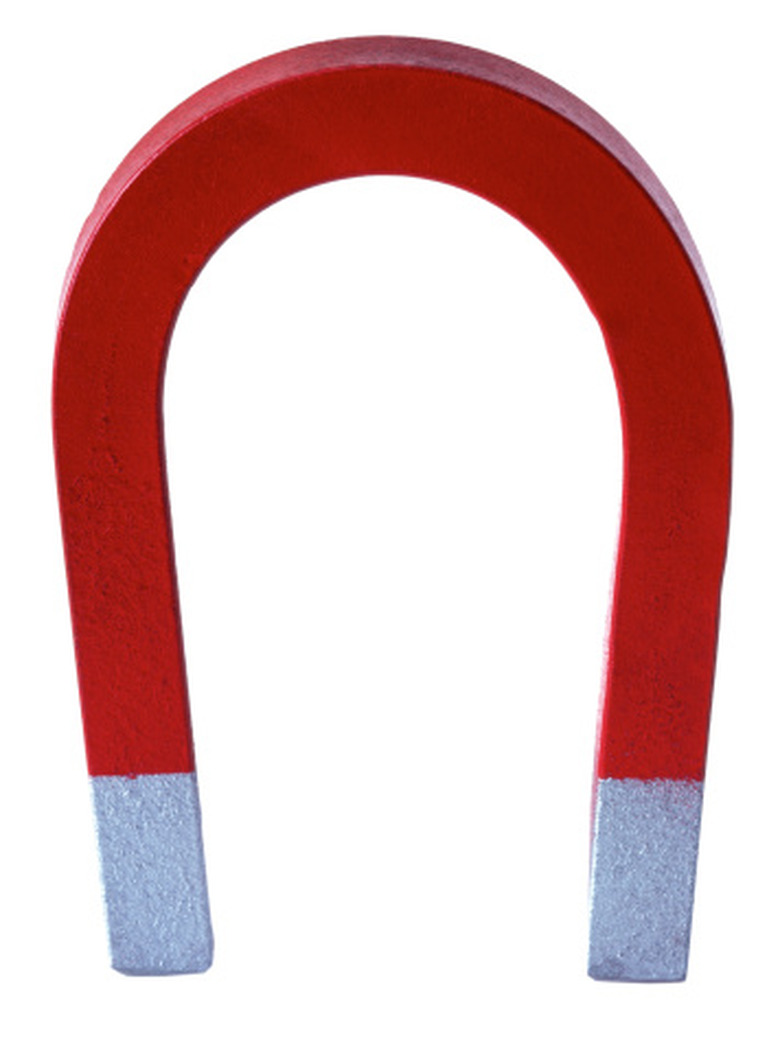What Are Magnet Keepers?
A permanent magnet is a piece of iron or a similar metal having its own magnetic field. Under ideal conditions, it will retain its magnetic strength for many years. Frequent drops, impacts or high temperatures weaken it. A piece of iron, called a keeper, fits over the magnet's poles, helping it retain its magnetism during long periods in storage.
Ferromagnetism
Ferromagnetism
All permanent magnets exhibit what scientists call ferromagnetism, when a magnetic field produces a strong attractive force in the metal. Under the right conditions, a ferromagnetic metal piece acquires its own field, becoming magnetized. Other kinds of metals, such as copper and aluminum, are paramagnetic, having a weak attraction to magnets and never having a permanent field. A magnet keeper is a piece of ferromagnetic material, which is not itself magnetized.
Storing Magnets
Storing Magnets
In all ferromagnetic materials, microscopic bits of metal, called domains, have tiny magnetic fields. If their magnetic north and south poles line up, they cooperate and form a large field around the whole object. Impacts and heat scramble the orientation of the domains, weakening the field. Long periods of time also weaken magnets. During storage, a keeper reinforces the magnetic field, maintaining its strength for longer periods of time.
Magnet Shapes
Magnet Shapes
Permanent magnets come in a variety of shapes: bars, horseshoes, rings and flat strips. Regardless of shape, every magnet has exactly one north and one south pole, located magnetically at opposite ends of the field. Lines of magnetic force exit the magnet at the north pole, curve around and re-enter it at the south pole, and pass through the magnet's material to the north pole, forming a continuous loop. A horseshoe magnet has its north and south poles near each other, one pole at each end of the "U" shape. It makes an ideal candidate for a keeper, as it lays across both poles, forming a magnetic bridge between them.
Magnetic Circuit
Magnetic Circuit
A magnetic field holds its strength best when the entire magnetic loop, or circuit, passes through a ferromagnetic metal at all points. A horseshoe magnet has an air gap between its two poles; the keeper closes this gap. A bar magnet, left by itself, will lose its strength over several months. Though a bar magnet has no "keeper," if you lay two bars side by side, with the north pole of one touching the south pole of the other, they form a magnetic loop in iron and preserve the strength of both magnets.
Cite This Article
MLA
Papiewski, John. "What Are Magnet Keepers?" sciencing.com, https://www.sciencing.com/magnet-keepers-8343697/. 24 April 2017.
APA
Papiewski, John. (2017, April 24). What Are Magnet Keepers?. sciencing.com. Retrieved from https://www.sciencing.com/magnet-keepers-8343697/
Chicago
Papiewski, John. What Are Magnet Keepers? last modified March 24, 2022. https://www.sciencing.com/magnet-keepers-8343697/
